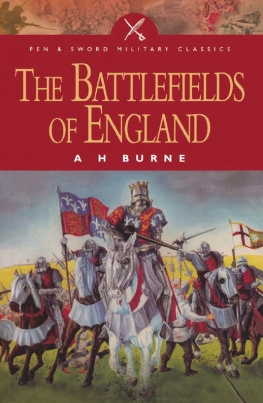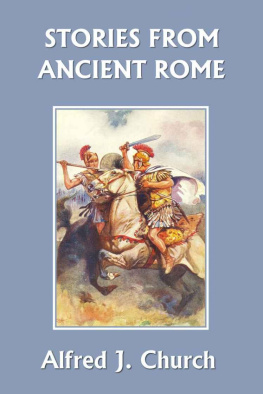PREFACE.
Image unavailable
I T cannot with truth be said that monumental history is treated in our day with scanty regard. Never, perhaps, were such permanent and forcible memorials of the past as the Arch of Titus in Rome, the Pont du Gard in the south of France, and the Porta Nigra of Trves, visited and gazed upon with warmer interest or a deeper sense of their value. We all feel the power that is exerted over us by the ruins of great Castles and great Abbeys. And in another way is this strong feeling of our times very widely manifested. I refer to the restoration of Cathedrals and Churchesnot only in our own country now for many yearsbut, more recently, in France. This restorative work may not always have been conducted with faultless taste or perfect judgment, but (to say nothing of religious motives) it testifies to a high appreciation of the importance of history written in stone.
There is, however, what may be termed a minor monumental history, which has not by any means always received its due attention. Our country is full of historic scenes, where the past is visibly recorded, and where, a few years ago, it was more visibly recorded than at present. Old states of society, old modes of living, obsolete habits of the people, are commemorated in many a small building which attracts little notice from the ordinary passer by. The lives of eminent persons, public events of high significance, have left their mark in villages, and market towns, and wayside places, where these recollections ought to be cherished, and where, if possible, the hand of the destroyer ought to be arrested. It should be added that nearly all such scenes and such fragments are pleasing in their aspect and worthy of the artists pencil as well as of the historians pen.
Under the influence of mixed feelings, made up partly of delight in what remains of this kind, partly of sorrowful regret for what is lost, I cannot hesitate to recommend these drawings by Mr. Rimmer, which he has illustrated by a running commentary. I do not commit myself to all his conclusions, which embrace a great multiplicity of subjects connected with very various parts of our country. The plan of the book is, of necessity, somewhat desultory; but I think there is some advantage, as certainly there is no fatigue, in rambling with him irregularly from county to county, through towns and hamlets, and using his eyes as we travel. We cannot all literally see these places ourselves; and if we were to see them, we might easily, through the want of some guidance, fail to observe their true character and expressive meaning. It should be remembered, too, that large numbers of such historic and picturesque buildings as Mr. Rimmer here delineates have been destroyed, or are in danger now of destruction. It is something if drawings preserve for us in one sense what in another sense (and a very melancholy one) is irreparably lost. Such views, too, and such pages as these, may help us to set a higher value on that which survives. On the whole, it seems to me evident that this book is a very useful contribution to what I have termed minor monumental history.
I will exemplify what I mean, and what I understand Mr. Rimmer to mean, by one or two independent illustrations, that suggest themselves to my memory; and if, in some degree, I appear to differ from him as to the resources of this kind which are afforded by different parts of the country, this only shows that, with all his care and diligence, he has not exhausted his subject.
Two illustrations shall be taken from the northern counties: and the first shall be the town of Kendal, which our author dismisses as containing hardly any architectural reminiscences of the past. To this I somewhat demur. Kendal, indeed, has no ancient houses, but its ground-arrangement is very singular; and this must be very ancient. It consists almost entirely of one broad winding street a mile in length, from which narrow lanes, which are not properly streets, open to the right and left, each being entered by a very small passage. Such narrow passages could very easily have been defended, in case of forays from the Scottish border; and it might be conjectured that they were planned with this danger in view. This question, indeed, must be dismissed as a puzzle nearly as great as that which is connected with the origin of the Chester Rows. The point of historical interest, for the sake of which Kendal is here brought forward, is this,that through this broad winding street, where the ground rises and falls very boldly, and where even now the houses are so varied in character that on days of light and shade they supply many good subjects for pictures, the troops of Charles Edward marched or straggled in 1745, both on the way to Derby and on their return. Through this circumstance, especially if we combine it with stories current in the neighbourhood concerning that time, this dull Westmorland street acquires a new and lively interest.
A second example is supplied by village after village in that wide-spread country of the dales which lies south-east of Kendal. Through Airedale and Ribblesdale, from Bradford to Lancaster, and northward to some considerable distance, there are a multitude of specimens of a curious kind of doorway, which I do not recollect to have seen elsewhere. These doorways generally consist of two curves, more or less regular, and more or less enriched with ornament, and with the initials of the families of some now forgotten dalesmen: the dates range from about 1630 to 1730: the earlier forms are simpler than those which follow; and after the later period they seem to cease suddenly. However this provincialism of rural architecture is to be explained, it is a social and artistic fact worthy of being observed and permanently recorded.
Turning now to the Midland Counties, I will again illustrate the subject by a couple of instances. Mr. Rimmer most accurately notes that the ancient Roman way of Watling Street passes along the north-eastern frontier of Warwickshire: but beyond this he does not make much use of a county which is by no means poor in historical associations. One place which would have given him excellent materials for description and for drawing, and not far from that part of this county, where, to quote the old rhyme,
From Dover to Chestre goth Watlyn-Street,
is the village of Polesworth. My attention was especially called to its picturesque and suggestive aspect, because I happened to visit the place just when I was within reach of the opportunity of inspecting some of the manuscripts of that prince of archologists, Sir William Dugdale. The historian of Warwickshire remarks that for Antiquitie and venerable esteem, the village of Polesworth needs not to give Precedence to any in the Countie; and indeed there is a charming impression of age and quiet dignity in its remains of old walls, its remains of old trees, its church, and its open common. Not far off, on an eminence commanding a delightful view, is Pooley Hall, the Lord of which by Reason of the Floods at some time, especially in Winter, which hindered his Accesse to the Mother Church, obtained a license from Pope Urban IV. to build a chapel within the precincts of his lordship. And here, in the garden of this modest hall, is a little chapel of comparatively late architecture, but doubtless built on the site of the old one; and here, full in view, on the level ground below, with the village beyond, is the river, evidently liable to floods. I give this scene merely as a specimen of the wealth that our English counties contain for the historian who is also an artist.



![Alfred C. Martino - Audio Nuggets: How To Get A Street Named [Text]](/uploads/posts/book/400603/thumbs/alfred-c-martino-audio-nuggets-how-to-get-a.jpg)









